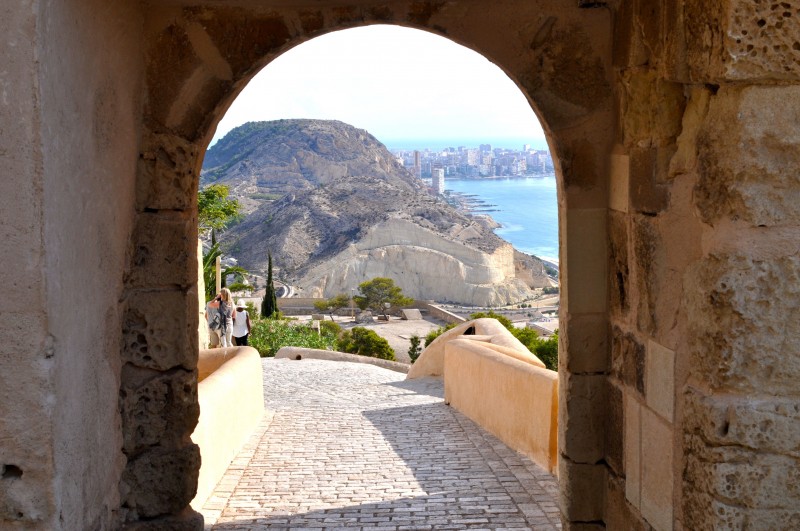
To be listed on the CAMPOSOL TODAY MAP please call +34 968 018 268.

Guidelines for submitting articles to Condado Today
Hello, and thank you for choosing CondadoToday.com to publicise your organisation’s info or event.
Condado Today is a website set up by Murcia Today specifically for residents of the urbanisation in Southwest Murcia, providing news and information on what’s happening in the local area, which is the largest English-speaking expat area in the Region of Murcia.
When submitting text to be included on Condado Today, please abide by the following guidelines so we can upload your article as swiftly as possible:
Send an email to editor@condadotoday.com or contact@murciatoday.com
Attach the information in a Word Document or Google Doc
Include all relevant points, including:
Who is the organisation running the event?
Where is it happening?
When?
How much does it cost?
Is it necessary to book beforehand, or can people just show up on the day?
…but try not to exceed 300 words
Also attach a photo to illustrate your article, no more than 100kb

Castillo de Santa Bárbara, Alicante castle
Panoramic views of Alicante City and the port from the Castillo de Santa Bárbara
The Castillo de Santa Bárbara stands on Mount Benacantil overlooking the Mediterranean Sea from the edge of Alicante City, offering impressive panoramic views, scenic walks and hundreds of years worth of history.
The origins of the castle date back to the 9th century when the Moors were in control of the Iberian Peninsula between 711 and 1296, although a mixture of Roman, Iberian and even Bronze Age artefacts have been found on the mountain slopes. The name of the mountain, ‘Benacantil’ is a phonetic adaptation of the name that was given by a medieval Arab geographer, Al-Idridi who originally called it “Banu-Iqatil”, which possibly derives from the words “pinna”, which is Arabic for “peak” and “laqanti”, which is the Arabic adjectival word for “Alicante”.

On 4th December 1248 the castle was seized by Castillian forces led by Alfonso of Castille, as part of the "Reconquist" of Spain which lasted over a hundred years, as Christian forces from the north gradually re-took territories in the south, driving the Moors into their last stronghold of the Kingdom of Granada.
Alfonso, known as "El Sabio", or "The Wise", named the castle Santa Bárbara, holding a great feast on the saint's day of Saint Bárbara to celebrate victory over the invaders.
However, internal politics prompted a breakdown in the former alliance between the northern Spanish kingdoms of Aragón and Castilla y León, and in 1296, under the leadership of James II of Aragon the castle was taken by the Aragonese and reformed. The Kings Peter IV of Aragon, Charles I of Spain, and Philip II of Spain later oversaw further reconstruction of the castle.
However in 1691 the Castillo de Santa Bárbara was attacked by a French squadron, followed by the English taking possession of the fortification for three years during the war of the Spanish Succession, before it was later bombarded again in 1873 by the ‘cantonalistas’ in the Cantonal uprising during the First Spanish Republic.
The military role of the castle eventually started to decline from the beginning of the 18th century when it was occasionally used as a prison instead before it then remained abandoned for a number of years. After years of wars, attacks and conflicts, the castle was finally made good and inaugurated in 1963 for the public as a place of historical heritage with exhibition rooms, an archaeological museum, (MUSA), and lifts installed inside the mountain that can be accessed by a long tunnel from the Playa del Postiguet.

Visitors can reach the top of the castle on foot either from the Parque de La Ereta or along the fortified walls from the top of Avenida de Alfonso el Sabio with the footpath starting on the opposite side of the road from the fire station. It can also be accessed by car from Calle de Vazquez de Mella, and there is ample parking at the top of the castle.
The Castillo de Santa Bárbara is fully equipped with facilities including toilets, a café and a restaurant, with several security officers patrolling the grounds who are always happy to give extra information and directions.
Tickets for the elevator can be purchased from self service ticket machines located at the tunnel entrance and it costs 2.70 euros (2022) for a lift journey up to the castle and back down again. The elevator is free for people over 65 years who carry some form of identification with them on the day.
The castle elevator is open from 10:00, the last lift up is at 19:20 and the last lift down is at 19:40.Castle Opening times:
Winter (15th November to 27th February) Monday to Sunday from 10:00 to 18:00
Spring (28th February to 16th June) Monday to Sunday from 10:00 to 20:00
Guided tours in English for groups can be pre-booked in advance. Click here for Guided tours in English for groups
NB: See subject heading "Recommended Routes" for various suggestions of ways to discover the best of Alicante, some of which include a visit to the castle.
Click here for the dedicated Alicante City section which includes places to visit and things to do in the city as well as what's on.




































